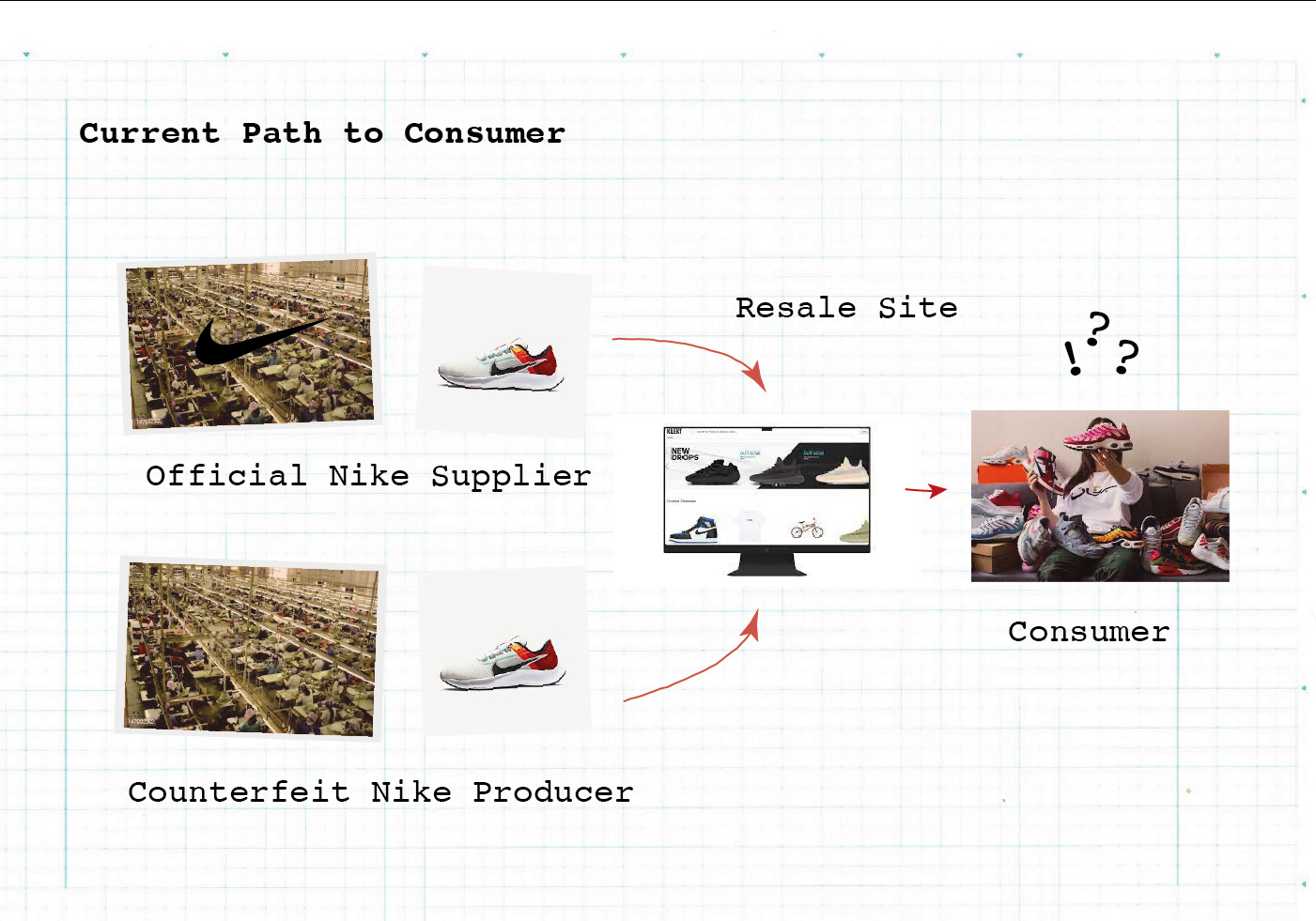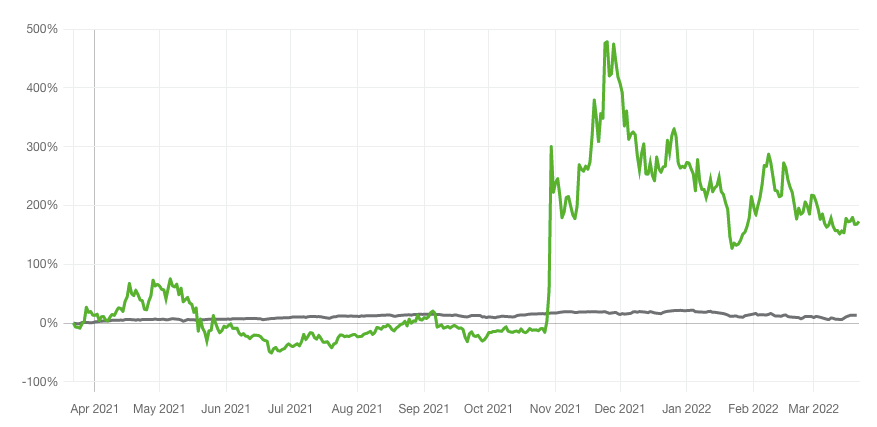Analysed: Are CPG Companies on the Metaverse a Fad or a Thing?
Suggesting some use cases for FMCG + Retail companies
It was 2018, during the first Bitcoin wave, and people were going crazy over crypto. People close to me were investing their life savings in a concept that a few months earlier they knew nothing about. My mum was asking me about setting up digital wallets! Large companies were trying to get in on the act, even if they didn’t have the same “go for broke or go for glory” mindset as individual investors(/gamblers?).
A friend of mine working at a foods company told me about a VP who had declared: “I want our brand to be the first into blockchain”. A project team had been put together, the assumed use case was driving transparency and traceability in the supply chain. IBM had been hired as external consultants - Big Blue was a darling of corporates in the blockchain space since it helped to bridge the gap between listed company sensibilities and digital revolution.
After several weeks of interviewing stakeholders, identifying business requirements, and scoping out tech solutions, a way forward was established: let’s stick with our current shared Microsoft Excel files!
For this brand and project team, it was clear that blockchain was a solution in search of a problem. Companies were experiencing FOMO (Fear of Missing Out) and wanting to rip-up the “old way” of doing things, even if that “old way” worked quite well and every actor knew precisely the role they had to play.
In late 2021, Facebook changed its name to Meta and ushered in a new mission: to “bring the metaverse to life and help people connect, find communities and grow businesses”. Cue a new wave of corporate FOMO: Big 4 Consultancy PwC buying virtual land and Nike buying a company which makes virtual art
But might there in fact be some genuine use cases for corporates, and specifically retail and FMCG companies in this new metaverse? Let’s explore…
Authenticating Products
Let’s start out with a problem often faced with branded goods: fakes. The manufacturing quality of factories producing rip-offs can be on a par to Nike’s own factories. When it comes to resale platforms it can be very difficult for the consumer to tell between real and counterfeit products. Hell, there are YouTube videos of professional sneaker collectors unable to tell the difference.
Now imagine the possibility NFT (non-fungible token) tags which sit on the inside of every pair of shoes produced. NFTs sit on a de-centralized ledger, which brings the peace of mind needed for everyone to embrace their digital possessions or assets. They are completely unique, and there is no way of counterfeiting them. And in the Nike example, this would mean that with every exchange of goods through a resale site there are two transactions:
The physical product transaction
The NFT transaction
The first of these may be through a conventional retail site, but the second might be through Nike’s own app. On a recent trip to a Nike store I was struck by the fact that I had to download the Nike app to pay. If Nike wants to drive even further traffic onto their app, what better way to do this than through using it as a portal for secondary sale authenticity verification.
And the best part of this is that those dual transactions effect dual consumption opportunities. The first is through the wearing of the physical product (do those shoes actually get worn out in public anyway?!) and the second is through virtual assets or wearables which are unlocked through ownership of the NFT. The owner can keep the original product fresh in their closet and wear the virtual product in the metaverse to their heart’s content.
Based on value chain ownership of this future consumer model, it looks like the only building block Nike does not currently have in place is a sneaker retail platform. Can we expect an acquistion/Nike’s own marketplace development in that space soon?
Testing Innovation
In the metaverse, consumers are asked to make choices all the time. Where do you want to go, which interaction do you want to have, what do you want to wear?
Many of these virtual world choices mirror the choices which consumers make in the physical world, and it can be assumed that there is some degree of consistency in terms of thinks like aesthetic judgement.
To give an example, the below is a screenshot of the avatar creation screen where consumers are asked to choose what they want to wear.
It is to be expected that this would mirror their aesthetic judgement in real life.
And this would therefore become a way of doing A/B testing. Instead of any kind of arbitrary survey asking consumers what they would buy, it would be based on consumers committing to making real decisions.
In the same way that one of the things recommended within lean-start-up methodology is forcing consumers to complete entire transactions in dummy products to confirm genuine interest; so could real product options be toggled and interest observed.
Imagine the above selection screen re-branded to assuage actual product interest on a product category or brand level.
Meta-Marketing
Advertising has evolved from the mass campaigns on television in the 1960s to the social media marketing of the 2000s, with advertising on the meta-verse being the logical next step.
All forms of attention can be monetised. Meta-marketing might be as simple as rendering a poster in pixels where consumer headspace is constantly refreshed, or it might be through curating a consumer journey which starts with the ad.
The meta-verse is currently NOT a walled garden or superapp in the same way that Chinese superapps might be walled gardens where the path from curiosity to purchase does not require exiting the app (eg. Alibaba controlling the path with consumers shopping on its TMall app then paying with Alipay).
This means that a lot of user actions trigger moves off-site, such as for payment. In the example below an NFT work of art within Decentraland invites a user to head to Opensea to purchase it, but analogously there is no reason that it shouldn’t be possible for a consumer to be off-sited from a metaverse to an online store to buy a shade of lipstick in a particularly nice colour or t-shirt with a certain print.
The metaverse has the potential to change the way we look at a typical consumer journey. Consumers will want their digital experiences and physical experiences with a brand to feel intertwined.
Advancing Cashflow
In his 2022 Predictions, Scott Galloway proposes the emergence of a “luxe coin”, with prestige brands’ current exclusivity digitised through techniques that put shortage on the blockchain.
“So what would occur if Chanel stated, ‘Anyone who owns our coin, and we’re solely going to situation 10,000 of them, will get entry to any 10 merchandise throughout our style or jewellery line at any time?’ If the coin comes with entry to a top-of-the-line style marketing consultant, unique invites to aspirational style occasions around the globe - What would that coin go for?”
Scott Galloway
In this example NFT is used as a digital vehicle for authenticating access to an offline set of privileges. If you own a particular NFT, you could gain access to a certain club, show, or get early access to a product drop, among other things. However, building upon what we discussed in 1. Authenticating Products above, Galloway also sees the possibility to take the luxe-coin concept further:
You can have Chanel luggage or the Chanel brand as your visible metaphor within the metaverse…. I don’t assume it’s unreasonable to assume this coin would go for $100,000, $500,000. Imagine the hypothesis it will entice. So in a single day, I imagine Chanel or Hermès may elevate $5 billion to $10 billion, making an attempt to monetize this shortage.”
Although there seem to be certain questions about the impact of advancing significant cashflows in one bump (publicly listed companies prefer to see smooth upturns in growth); there is no question that NFTs and the metaverse offer a new distribution channel for the concept of brand scarcity and brand value.
Creating Buzz Around Purpose
Michael Patent, founder of Patent Group, believes that certain FMCGs are going to have trouble because their brands aren't built for true lifestyle engagement: “A shaving cream, or a razor, or a shampoo, for example”.
Since there isn't much of a need for FMCG products within games or metaverses, companies in this industry have opted for purpose-oriented integrations. P&G's women's razor brand Venus created more realistic skin types for avatars replete with freckles, acne, and cellulite; and Unilever's mayonnaise brand Hellmann’s created a branded island in Animal Crossing where it invited players to drop off their spoiled turnips in exchange for a real-world donation to Canadian food-rescue charity Second Harvest. It formed part of the brand's purpose strapline that "food is too good to be wasted"
For these brands, they are looking to bring a buzz around activities in the metaverse which mirror the same purpose that they bring to the physical world.
Summary
If we take a look at the price of MANA - the currency used to buy land and items in one of the leading metaverses, Decentraland, it is clear that there has been a significant fall of from the peak at the end of 2021, suggesting that the incredible buzz is cooling off.
However, the fact the hype is dying down does not change the fact that there are strong underlying use cases for NFTs and the metaverse.
Accordingly, although not all FMCG and retail brands are positioned in the same way when it comes to performing in the metaverse, we have shown some of the tangible opportunities to use the metaverse to drive deeper consumer engagement, and ultimately increase growth and revenue.











